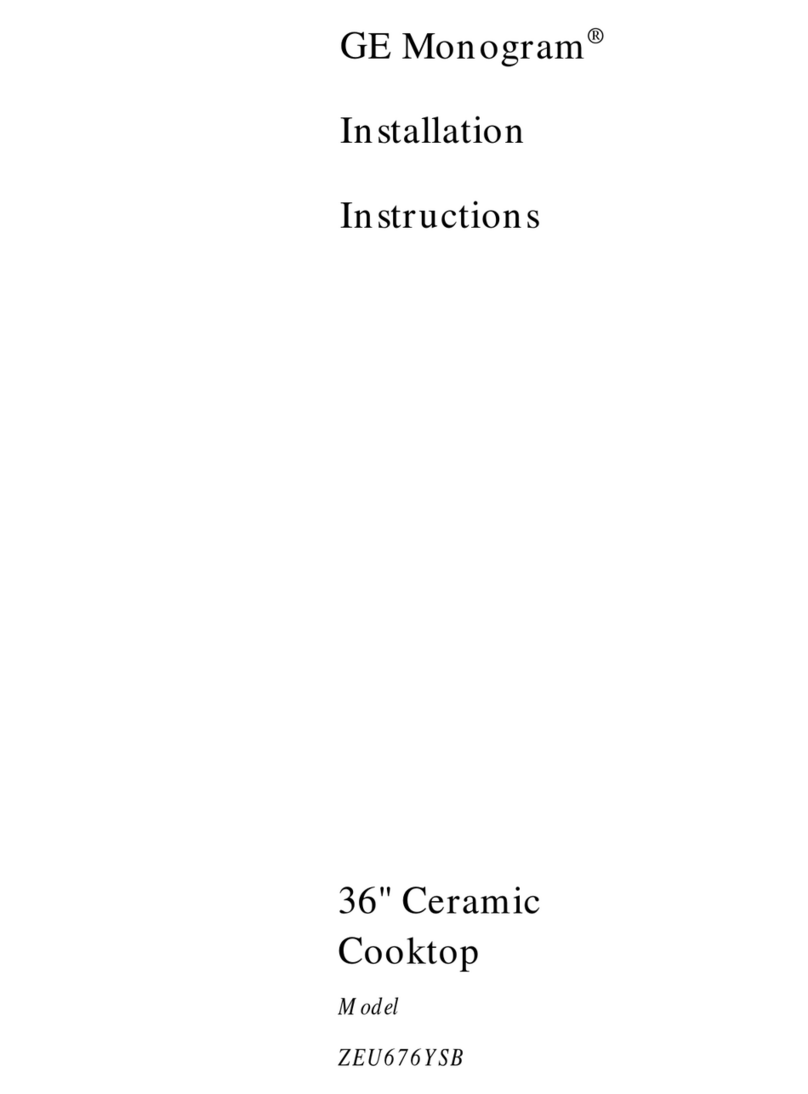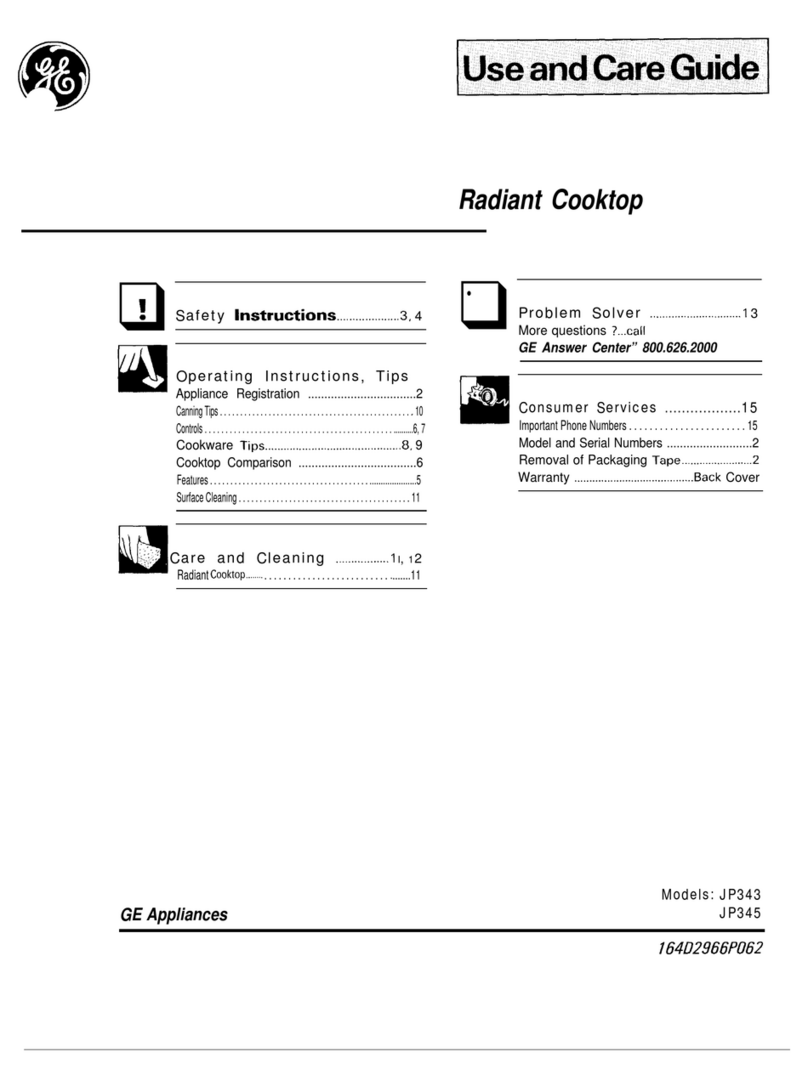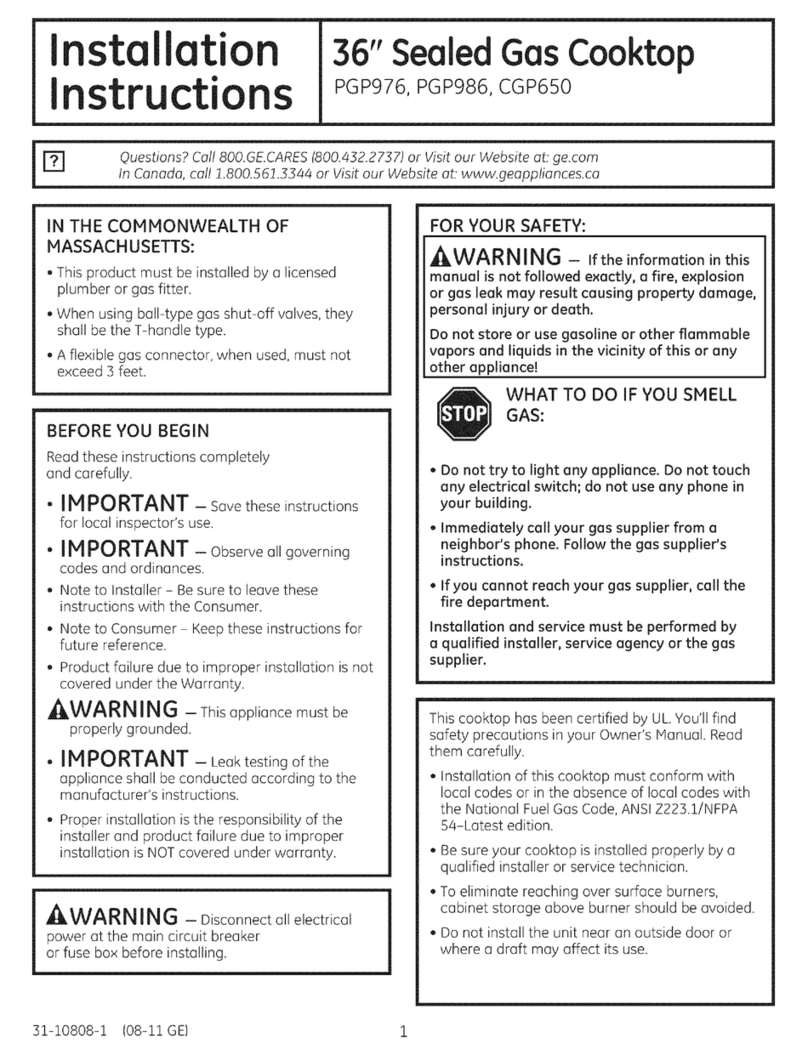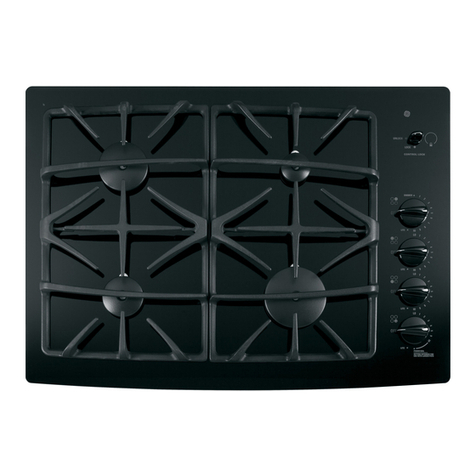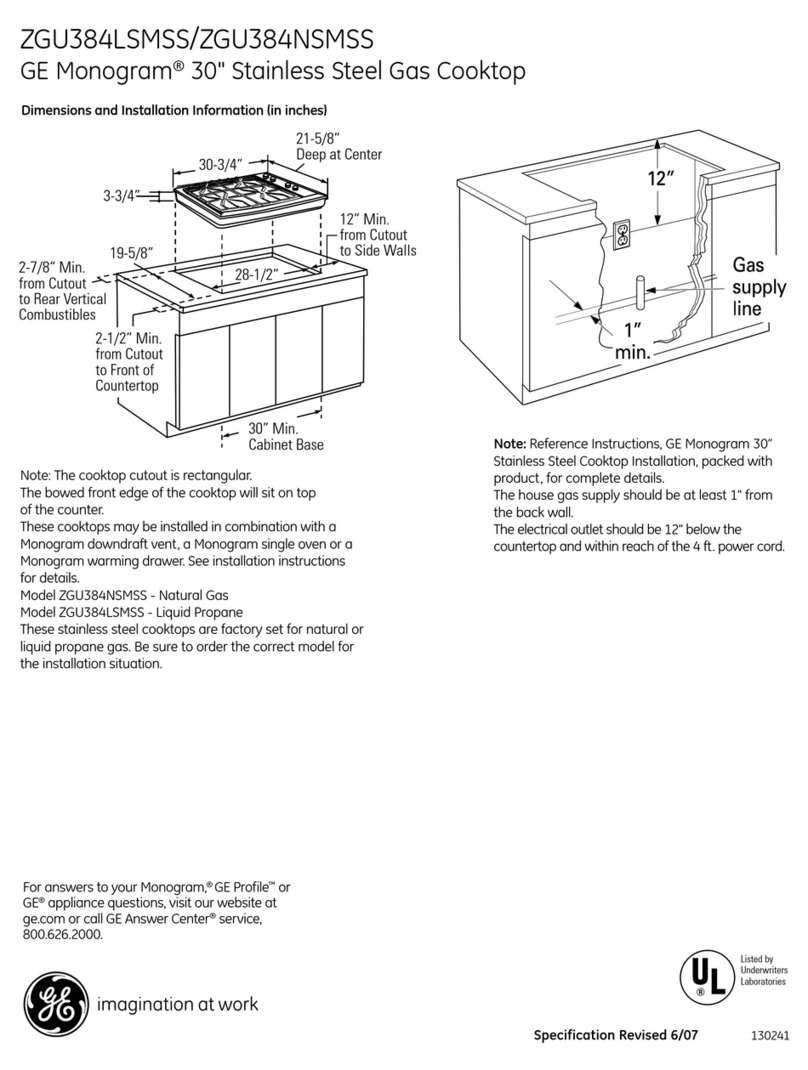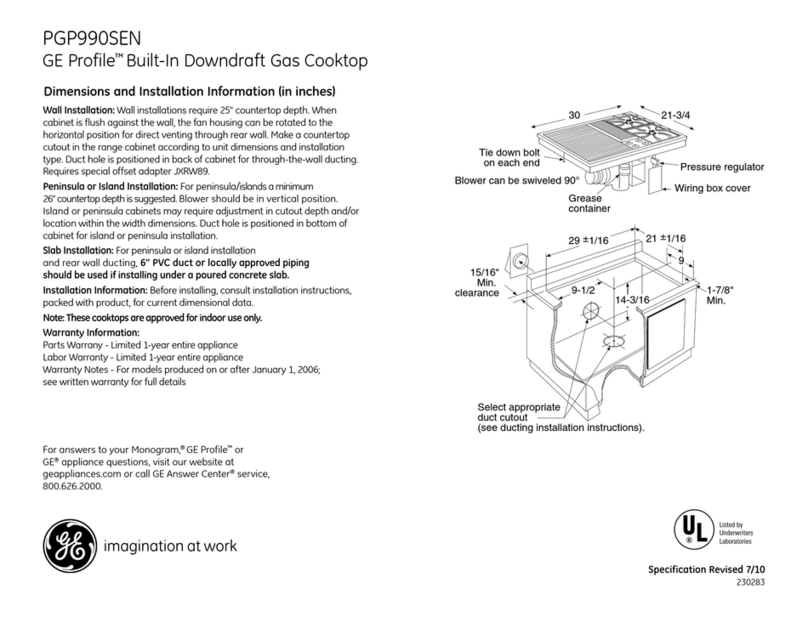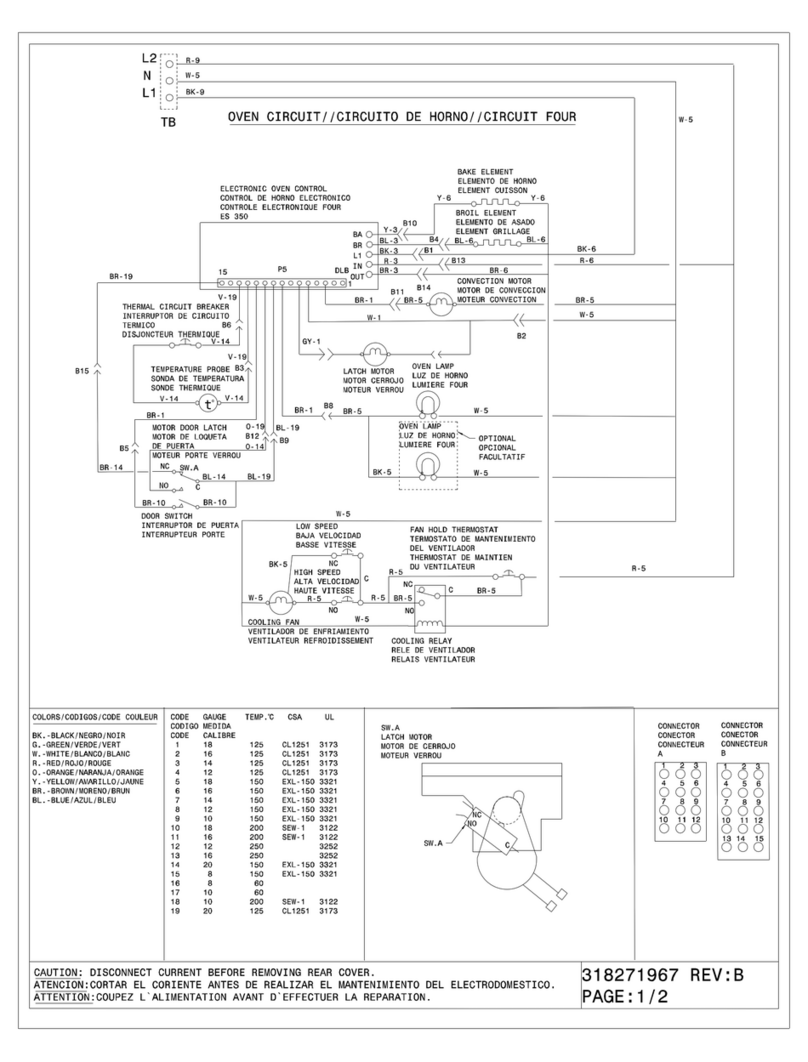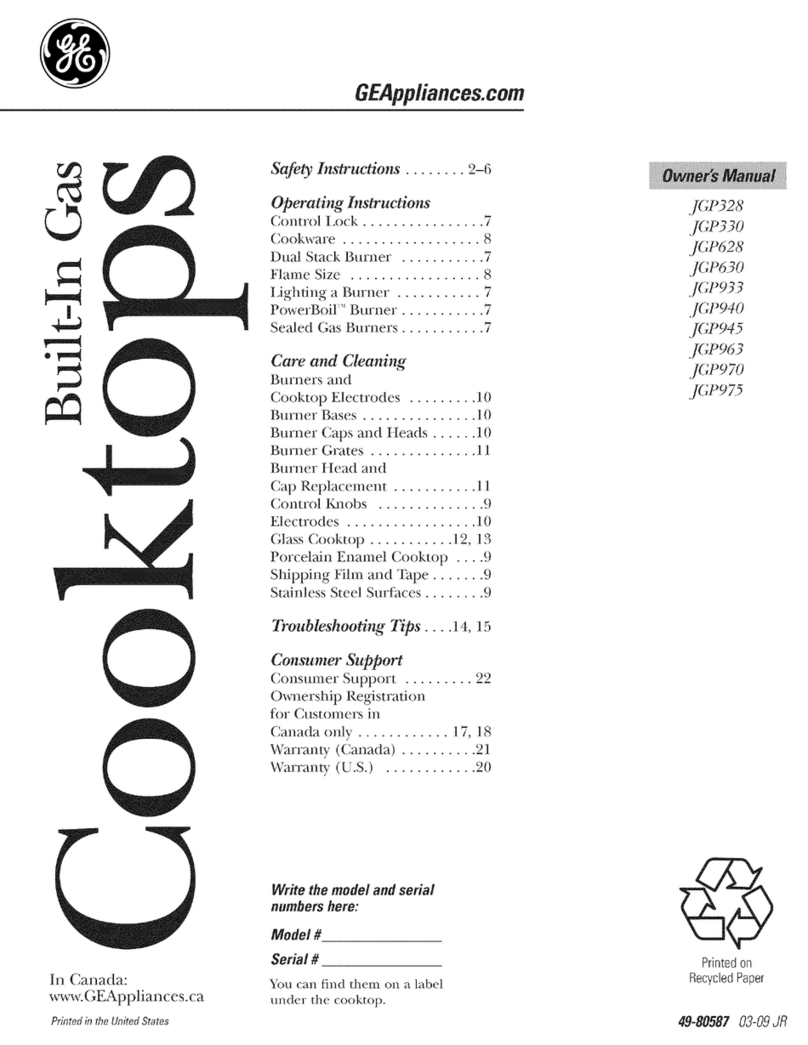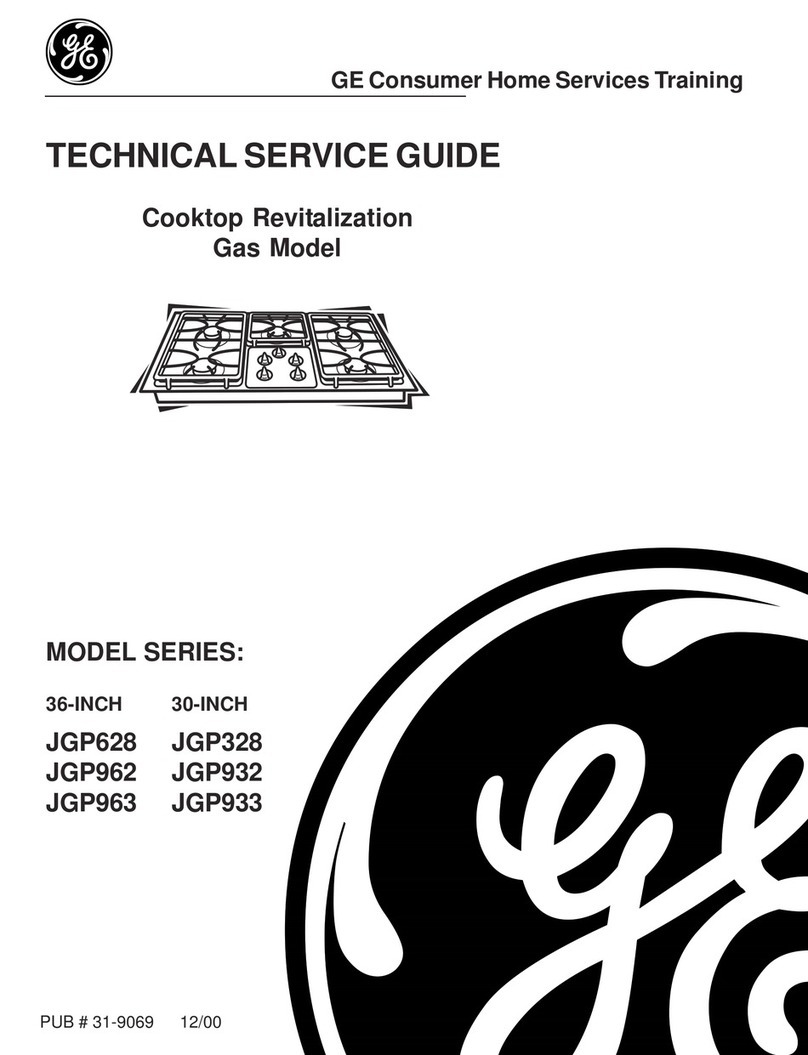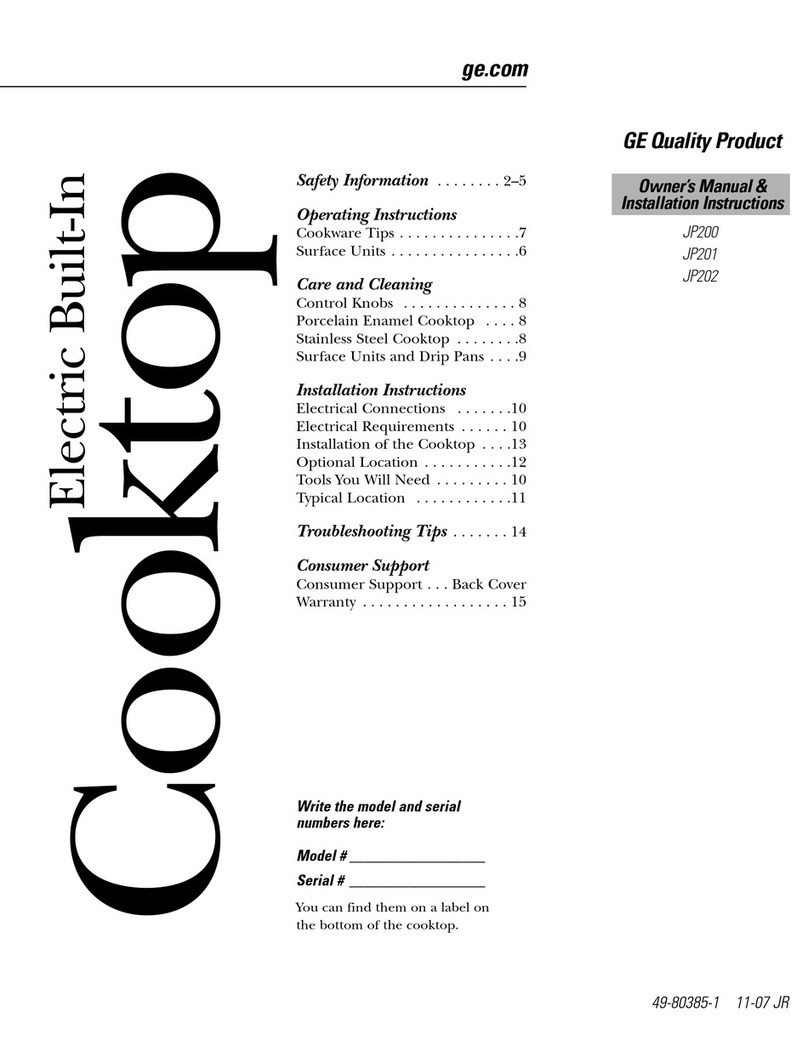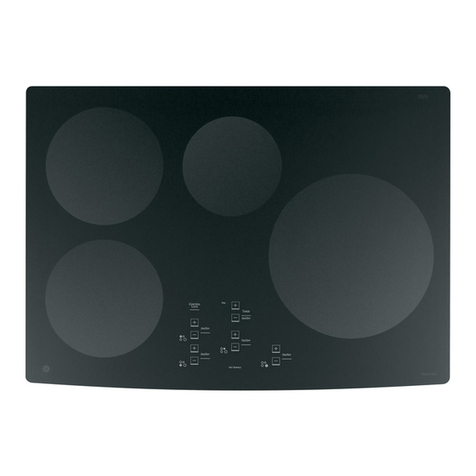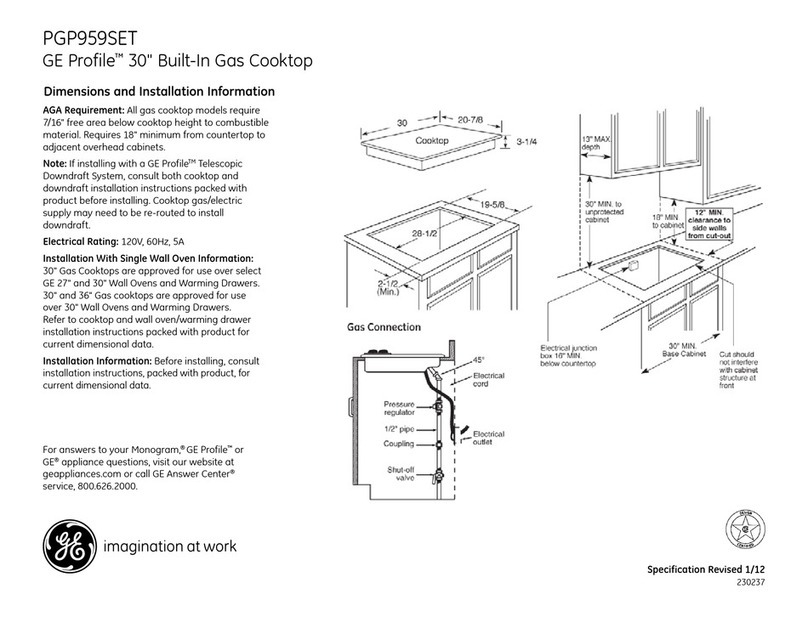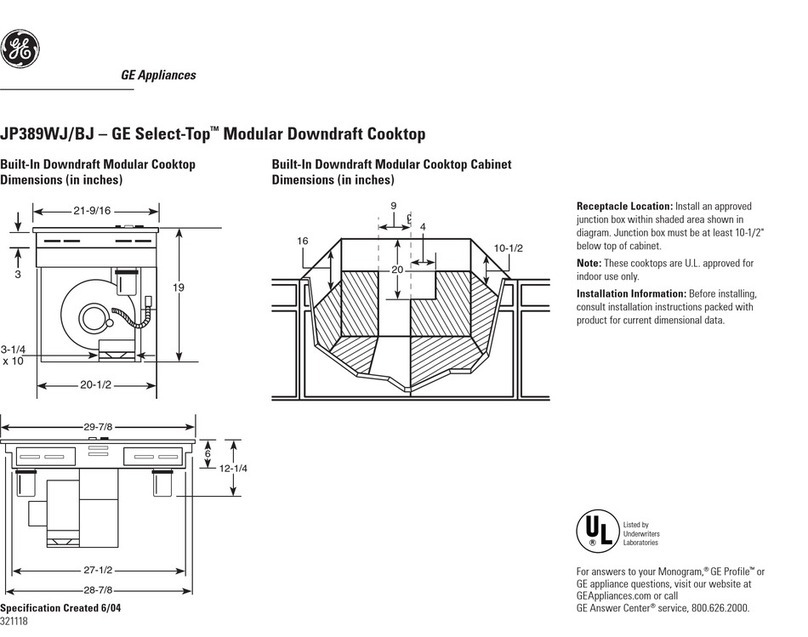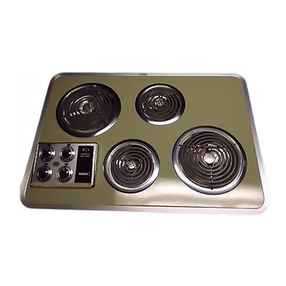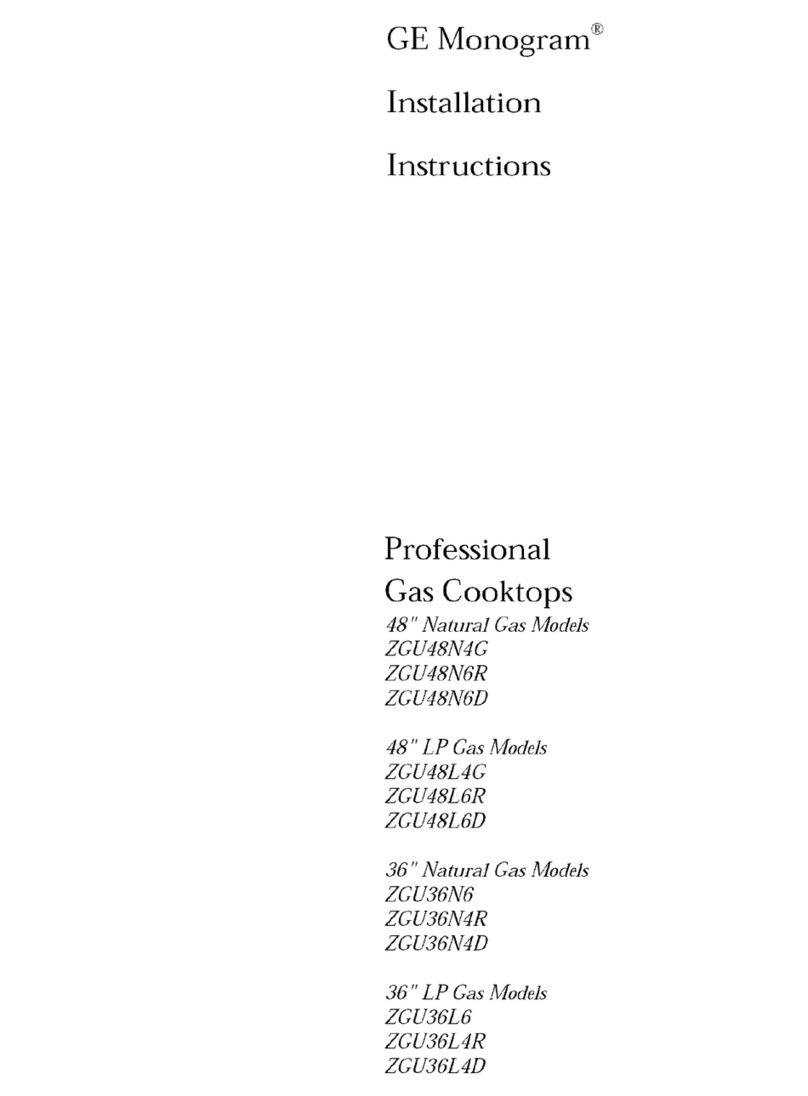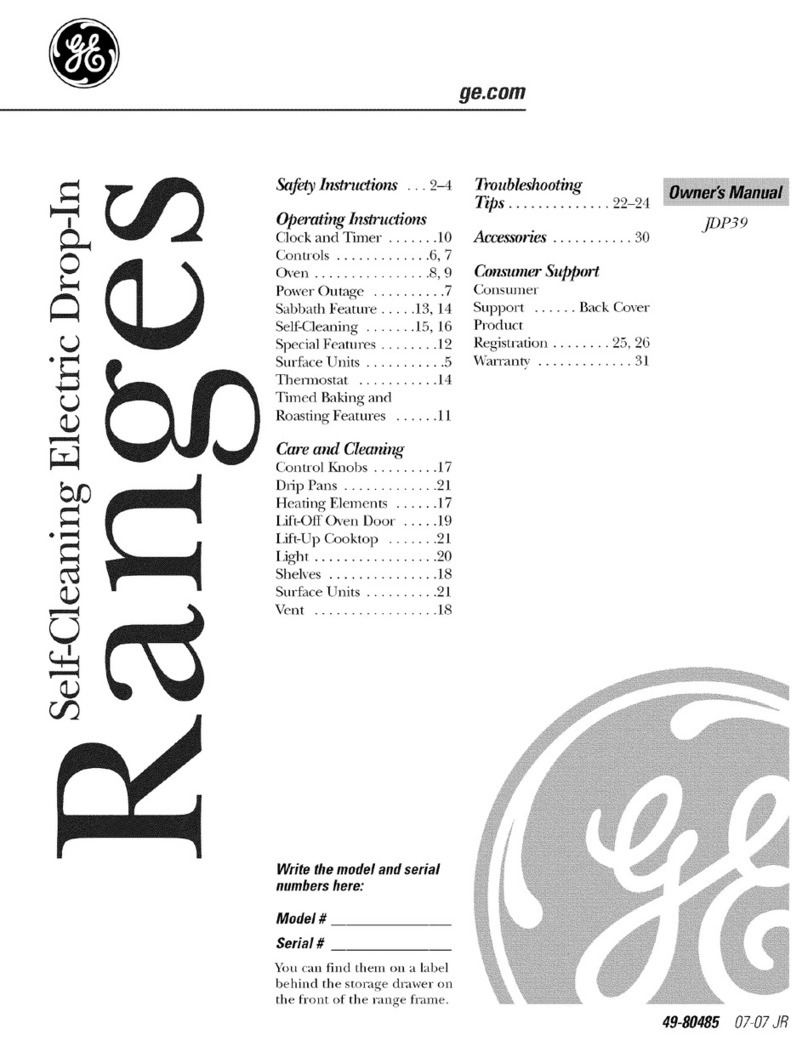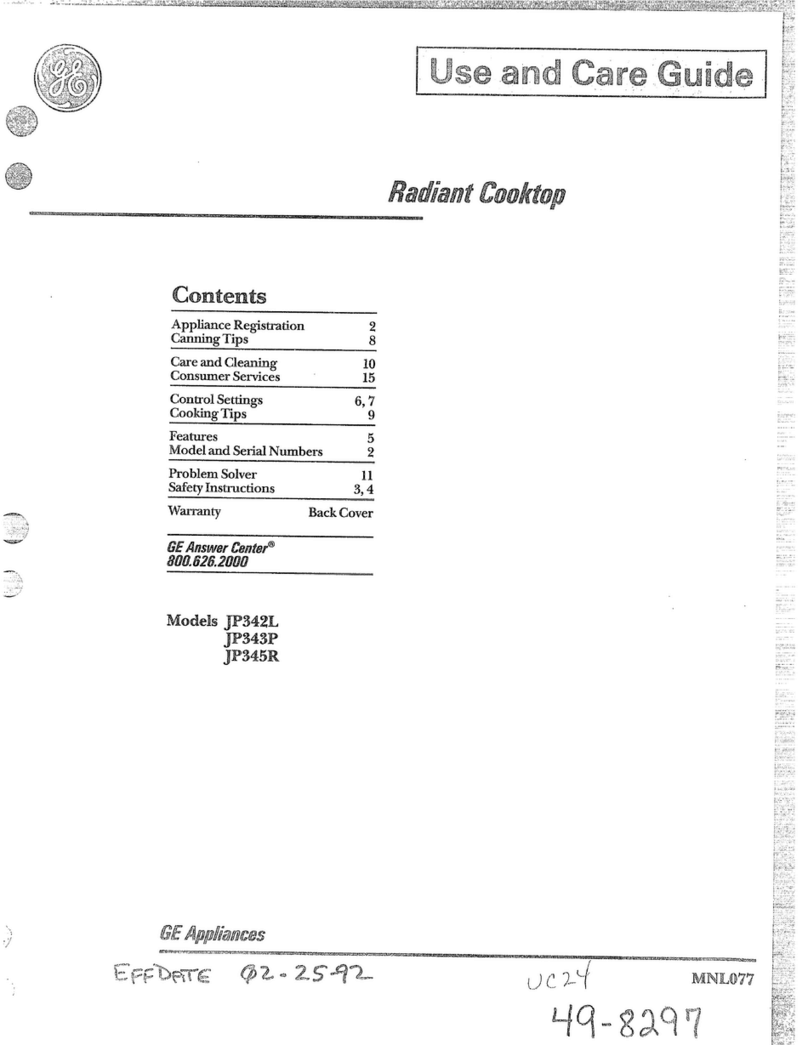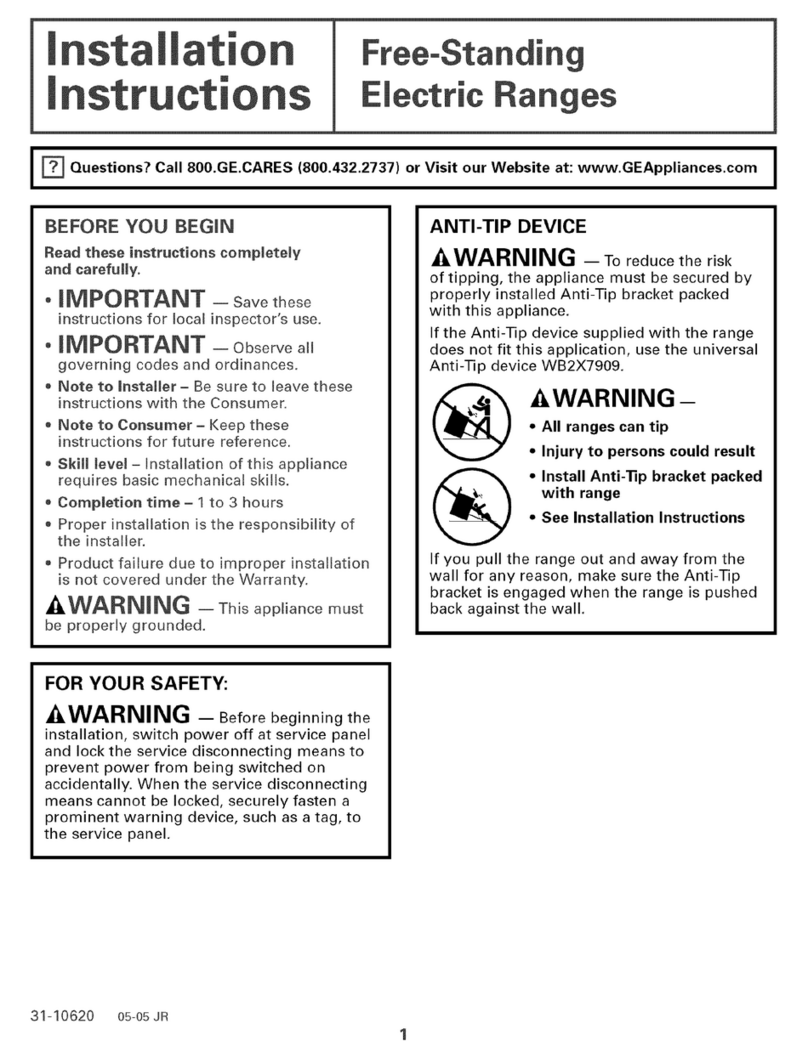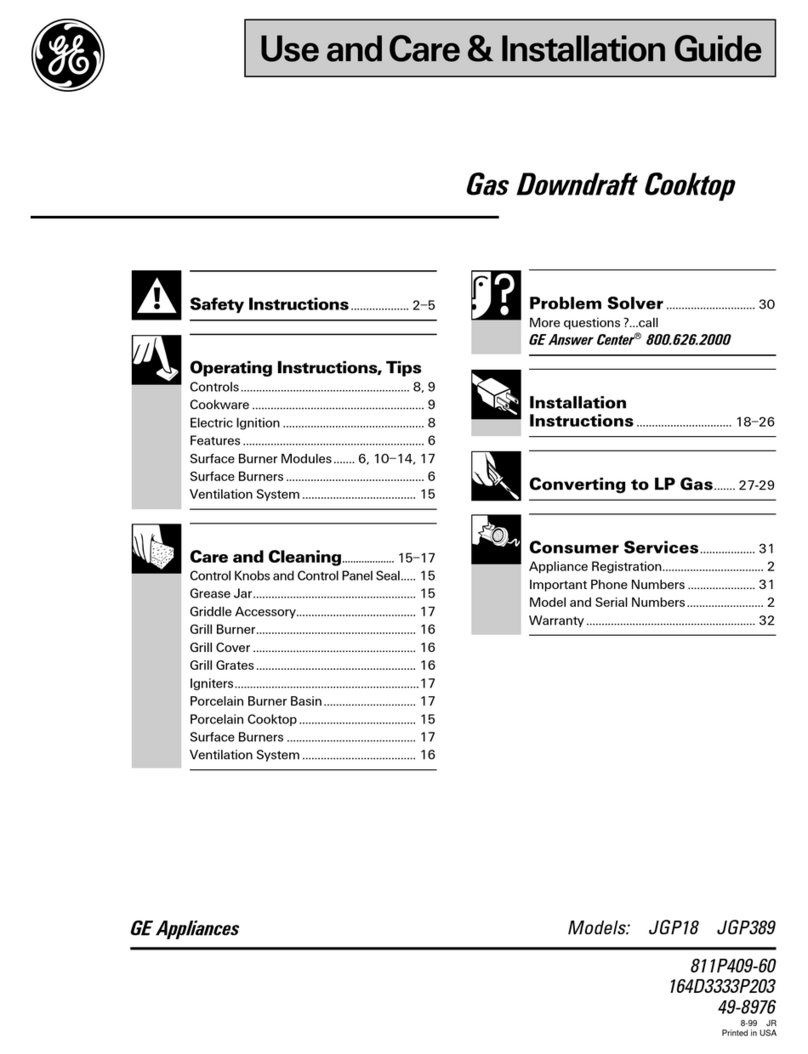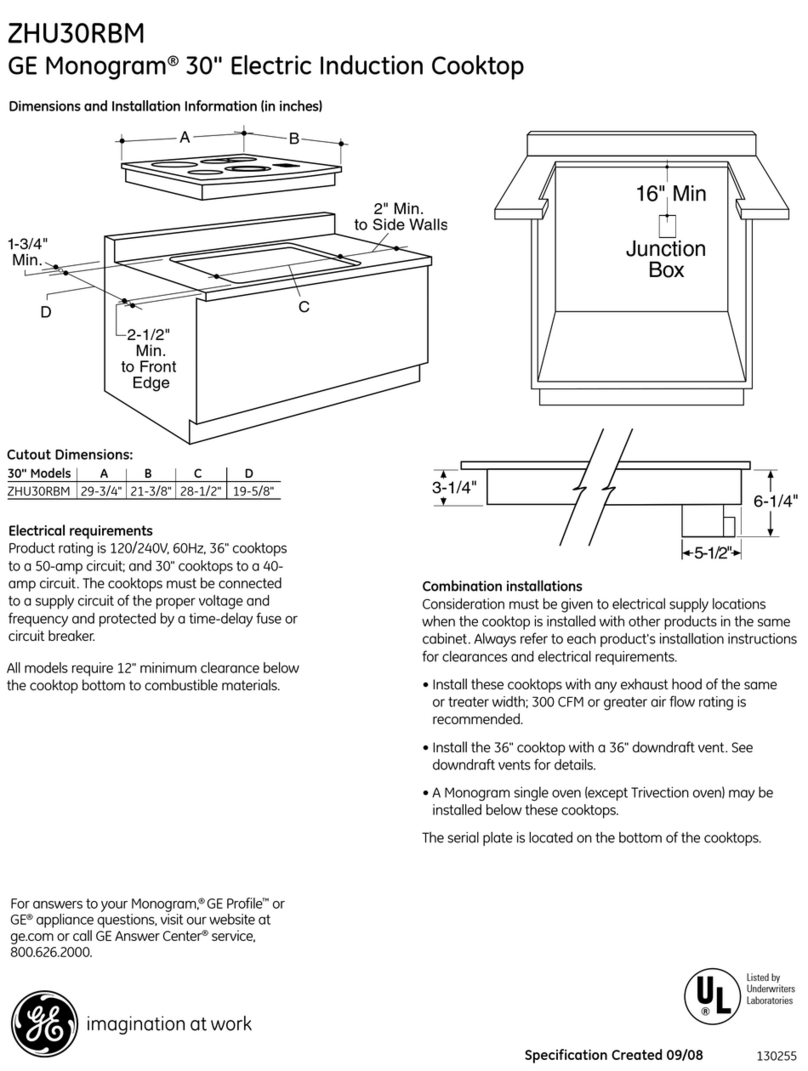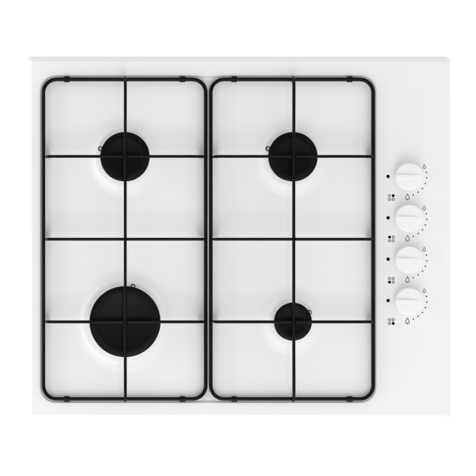Instrucciones de conversión
PRUEBA DE PÉRDIDAS
ADVERTENCIA:¡NO USE UNA
LLAMA PARA VERIFICAR PÉRDIDAS DE GAS! No utilice
la estufa hasta que se hayan puesto a prueba todas
las conexiones.
Lleve a cabo una prueba de pérdidas según las
siguientes instrucciones:
1. Compre un detector líquido de pérdidas o prepare una
solución jabonosa con mitad agua, mitad detergente líquido.
2. Cuando se hayan realizado todas las conexiones,
asegúrese de que todos los controles de la estufa estén
OFF (apagado) y gire la válvula de suministro de gas a
la posición ON (encendido).
3. Aplique el detector líquido de pérdidas o la solución
jabonosa alrededor de todas las conexiones desde la
válvula de apagado hasta la estufa.
4. Se produce un flujo de burbujas desde el área de la
pérdida cuando se identifica una.
5. Si se detecta una pérdida, cierre el suministro de gas.
Ajuste el accesorio. Vuelva a encender el gas y pruebe
de nuevo.
Si la pérdida persiste, desconecte el suministro de gas y
comuníquese con su vendedor para recibir asistencia. No
trate de utilizar la estufa si se detecta una pérdida.
2
3
CONTROLE EL ENCENDIDO
Conecte el cable de suministro eléctrico.
Presione una perilla de control hacia adentro y gire a
la posición LITE (encendido). El encendedor producirá
chispas y el quemador se encenderá. La primera
prueba puede tomar más tiempo, mientras se purga
el aire de la línea de gas.
B
A
3
Controle para determinar si las llamas del quemador
son normales. Si las llamas se parecen a A, llame
al servicio técnico. Las llamas normales de los
quemadores deben ser como B o C, dependiendo
del tipo de gas que utilice. Con gas LP, es normal
que haya puntas amarillas en los conos externos.
C
Gire la perilla a OFF (apagado).
Repita el procedimiento para cada quemador.
E
D
A–Llamas
amarillas
Llame al servicio
técnico
B–Puntas
amarillas
Normal para gas LP
C–Llamas azules
Normal para gas
natural
AJUSTE LA CONFIGURACIÓN
DE LLAMA BAJA (FUEGO LENTO)
Las válvulas de los quemadores superiores cuentan
con tornillos de ajuste para llama baja/fuego lento
en el centro de las barras de control. Puede necesitarse
una linterna para ubicar el tornillo. Se necesita
un destornillador plano pequeño de lados delgados (hoja
de un ancho de aproximadamente 1/8″) para llegar al
tornillo.
Encienda los otros dos quemadores y configure
las perillas en un nivel medio a alto.
Encienda el quemador que se va a ajustar y gire
la perilla a LOW (baja).
B
A
4
Quite la perilla e introduzca un destornillador dentro
de la barra de la válvula.
Gire el tornillo de ajuste hasta que la llama alcance
el tamaño deseado.
Realice una prueba de estabilidad de llama.
Prueba de estabilidad de llama
Prueba 1: Con el ventilador de corriente descendente en
HI (alta), gire rápidamente la perilla del
quemador de HI (alta) a LOW (baja). Si la llama
LOW (baja) se apaga, aumente el tamaño de la
llama y pruebe de nuevo.
Prueba 2: Con el quemador en la configuración LOW
(baja), abra y cierre la puerta del gabinete
ubicada debajo de la estufa. Si la llama se
apaga por la corriente de aire creada por el
movimiento de la puerta, aumente la altura
de la llama y pruebe de nuevo.
Nueva verificación de la llama
Después de realizado el ajuste, apague todos los
quemadores. Encienda cada quemador en forma
individual. Observe la llama en la posición HI (alta). Gire
la válvula a la posición LOW (baja) y asegúrese de que
el tamaño de la llama disminuya a medida que la válvula
se gira en sentido contrario a las agujas del reloj.
E
D
C
